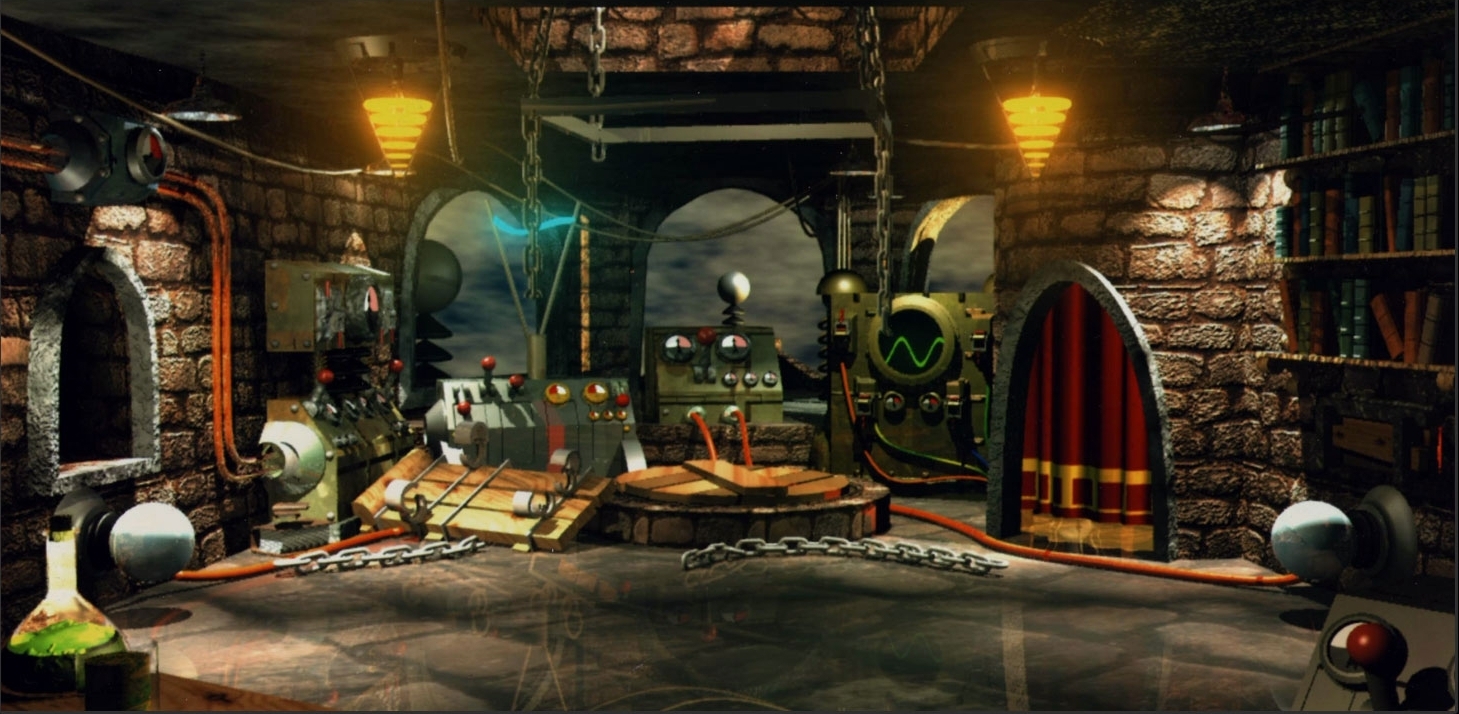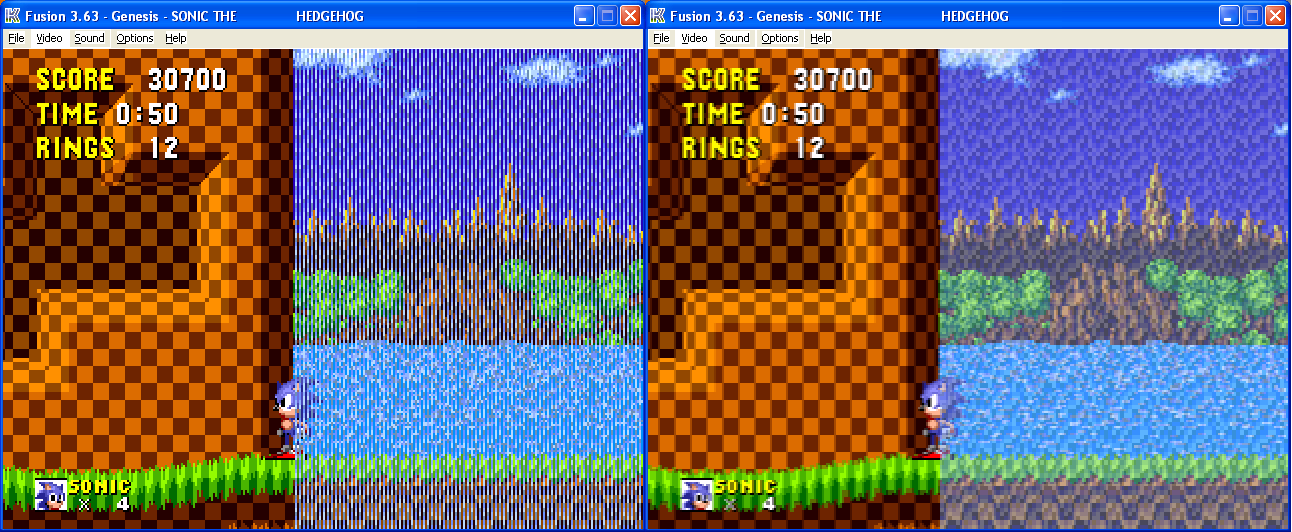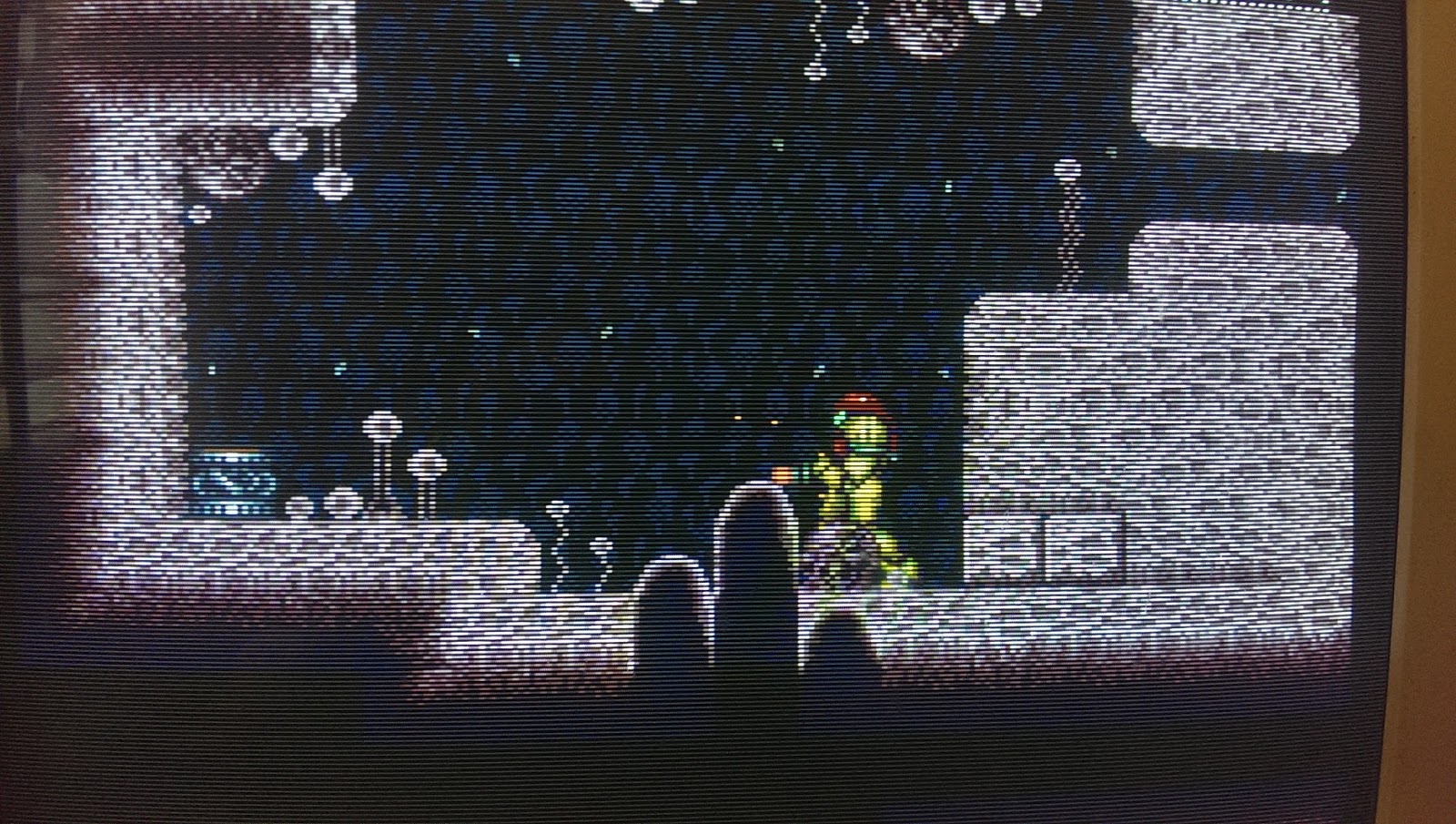The French Wikipedia is very interesting about the subject of "Pixel art", and particularly this part

:
«
Le choix esthétique des gros pixels
Du fait de la disparition des contraintes techniques, aujourd'hui s'exprimer en pixel art n'est plus une nécessité, mais un choix esthétique, culturel, parfois commercial aussi. La plus commune des méthodes artistiques repose ainsi dans ce domaine en la réduction volontaire de la quantité de pixels pour un même sujet représenté (plutôt qu'en la diminution de sa palette de couleurs, puisque les changements y sont moins perceptibles, en général). Par ce type de filtre intentionnel, qui n'est dégradant que superficiellement (voir le paragraphe sur
l'intentionnalité des détails), l'image suffisamment crénelée peut finalement porter la mention : à « gros pixels ».
L'agrandissement devient généralement nécessaire, sur les affichages haute résolution modernes (2, 3, 4 fois, voire davantage comme dans l'illustration de l'
alien plus haut, et préférablement sans flou, pour mieux apprécier le travail pointilleux et sans altérer la palette notamment). Cet étirement sans perte accroît nécessairement l'effet pixelisé initial, parfois exagérément jusqu'à le rendre presque grossier par la visibilité excessive des carrés. Il s'agit alors d'un effet pervers, qui dégrade la qualité esthétique de l'œuvre originelle. Cette perte de fidélité sans précaution, loin d'être moderne, est parfois oubliée collectivement par d'adoption, voire la revendication de blocs disgracieux quand ce n'est pas du tout nécessaire. À moins que cela ne soit intégré à un argument commercial tout à fait assumé. En cela, la mode des très gros pixels se réfère davantage à la préhistoire des jeux vidéo, à la
Pong (tout point composant le dessin est restitué comme un large rectangle de plusieurs pixels sur les vieux écrans), plutôt qu'aux systèmes postérieurs dont la résolution écran était voisine de celle native matériellement (1 pixel logiciel est rendu par exemple en 2×2 physiquement). Le flou automatique lors de l'agrandissement est généralisé sur les navigateurs internet ; il l'est aussi sur la plupart des visionneuses d'images
bitmap (où
IrfanView permet a contrario de désactiver le filtre, sous Windows). Dramatiquement pour la diffusion des œuvres en pixel art de très faible résolution, les logiciels de retouche
bitmap laissent encore trop souvent place à ces visionneuses “modernes”, tout à fait inadaptées en l'occurrence.
Cette apparence carrée, plate, froide ou austère est le souci majeur des connaisseurs des premiers jeux vidéo sur les machines d'origine. Ils recourent de nos jours à des filtres logiciels, sur les émulateurs récents principalement, afin de voir simulés les luminophores de leurs écrans cathodiques d'antan (télévision domestique ou poste d'une borne d'arcade). Ces divers filtres adoucissent (brisent etc.) les carrés de pixels, jusqu'à restituer le lissage naturel du fameux balayage électronique, ce qui rend l'image aussi “chaleureuse” qu'à l'époque, dans un contexte nostalgique surtout.
Les algorithmes de lissage des agrandissements, hormis ceux à base de vectorisation partielle dans certains logiciels dédiés en photographie, se retrouvent compilés (en dehors des émulateurs spécialisés ci-dessus) dans des interfaces telles que l'outil
Image Resizer (alias
2dimagefilter) sur Windows (
Inkscape, éditeur vectoriel multiplateforme, recèle depuis peu un tel convertisseur de pixel art). Si le résultat est parfois surprenant de poli (quand l'anticrénelage disparaît totalement, à la mode des jeux vidéo actuels, après celle des animations Flash en vectoriel), l'intérêt de supprimer aveuglément les arêtes des gros pixels, ou de détériorer l'image à divers niveaux dont les trames, repose la question de la prévalence des pixels précisément disposés en pixel art. Par exemple, les points (de pixels) abusivement connectés entre eux (afin de produire le lissé) : tant que les algorithmes actuels ne disposeront pas de reconnaissance à base d'images (et en étant optimiste sur la faisabilité à cette très petite échelle), l'agrandissement sera tantôt déformé, tantôt lissé correctement, sans possibilité de prédire le bénéfice (sur un échantillon quelconque d'images), ni d'affirmer que la méthode (chirurgicale ou seulement esthétique) ne cache simplement pas une curiosité passagère, voire une lassitude des gros pixels. Ce type d'agrandissement remplace une stylisation humaine par une artificielle, en y ajoutant souvent des erreurs d'interprétation. Un peu comme pour le cas des filtres de flou d'agrandissement (
upsampling), son utilisation est donc sujette à caution : elle serait à éviter absolument pour toute restitution fidèle. Le public néophyte en pixel art pourrait cependant apprécier cette transition en douceur. »
Link : Le choix esthétique des gros pixels
------------
Translated into English with Google Translate (maybe it's not perfect

) :
«
The aesthetic choice of big pixels
Due to the disappearance of technical constraints, today to express in pixel art is no longer a necessity, but an aesthetic choice, cultural, sometimes commercial too. The most common of the artistic methods thus rests in this field in the voluntary reduction of the quantity of pixels for the same subject represented (rather than in the reduction of its palette of colors, since the changes there are less perceptible, in general). By this type of intentional filter, which is degrading only superficially (see the paragraph on
the intentionality of details ), the sufficiently crenellated image can finally be labeled: "big pixels".
Magnification usually becomes necessary on modern high resolution displays (2, 3, 4 times, or more as in the illustration of the higher
alien , and preferably without blur, to better appreciate the picky work and without altering the pallet in particular). This lossless stretching necessarily increases the initial pixelated effect, sometimes to an exaggerated extent to make it almost coarse by the excessive visibility of the squares. It is then a perverse effect, which degrades the aesthetic quality of the original work. This loss of fidelity without precaution, far from being modern, is sometimes forgotten collectively by adoption, even the claim of disgraceful blocks when it is not necessary at all. Unless this is integrated with a commercial argument that is fully accepted. In this, the mode of the very large pixels refers more to the prehistory of video games, the
Pong (any point composing the drawing is rendered as a large rectangle of several pixels on the old screens), rather than later systems of which the screen resolution was close to the native one (1 software pixel is rendered for example in 2 × 2 physically). Automatic blur during enlargement is widespread on internet browsers; It is also true on most
bitmap image viewers (where
IrfanView allows a contrario to disable the filter, under Windows). Dramatically for the diffusion of works in pixel art of very low resolution,
bitmap editing
software too often leave room for these "modern" viewers, quite unsuitable in this case.
This square, flat, cold or austere appearance is the major concern of connoisseurs of the first video games on the original machines. Nowadays, they use software filters, mainly on recent emulators, to simulate the phosphors of their old cathode screens (home television or an arcade terminal). These various filters soften (break etc.) the squares of pixels, to restore the natural smoothing of the famous electronic scanning, which makes the image as "warm" as at the time, in a particularly nostalgic context.
The algorithms for smoothing enlargements, except those based on partial vectorization in some software dedicated to photography, are found compiled (apart from the specialized emulators above) in interfaces such as the
Image Resizer tool (aka
2dimagefilter ) on Windows. (
Inkscape , a multiplatform vector editor, has recently had such a pixel art converter). If the result is sometimes surprisingly polite (when the anti-alias disappears totally, the fashion of the current video games, after that of vector-based Flash animations), the interest to delete blindly the edges of the big pixels, or to deteriorate the image at various levels including frames, based on the question of the prevalence of pixels precisely arranged in pixel art. For example, (pixel) points that are mis-connected (to produce smoothness): as long as current algorithms do not have image-based recognition (and being optimistic about feasibility at this very small scale) , the enlargement will be sometimes deformed, sometimes smoothed correctly, without possibility of predicting the benefit (on any sample of images), nor to affirm that the method (surgical or only aesthetic) does not simply hide a temporary curiosity, even a weariness of big pixels. This type of enlargement replaces a human stylization with an artificial one, often adding errors of interpretation. A bit like the case of
upsampling filters, its use is therefore questionable: it should be avoided absolutely for any faithful reproduction. The neophyte audience in pixel art could however appreciate this transition smoothly. »
Link : Pixel art (French Wikipedia translated into English)
 :
:































































































